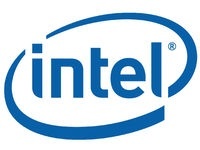-
Rahul R
15:35 07th May, 2013
Intel Silvermont Mobile Processor Architecture Launched, Expected To Rival ARM SOCs | TechTree.com
Intel Silvermont Mobile Processor Architecture Launched, Expected To Rival ARM SOCs
Promises 3X the performance, while consuming 5X less power than current-gen Intel Atom chips.

Intel has launched its new mobile micro-architecture called Silvermont, promising thrice the performance of current-gen Intel Atom processors. Power efficiency is also a key goal of the Intel Silvermont, said to consume 5 times lesser power than predecessors (i.e., 20% that of the current-gen). Intel says the reason to expect this efficiency lies in the optimization of its 22nm SOC, by using 3D Tri-gate transistors (a technology first seen in their Ivy Bridge processors in 2012). As you'd expect, processors based on this architecture will still use the x86/CISC instruction set, and not ARM/RISC.
Dadi Perlmutter, Intel's executive vice president and chief product officer, stated in a release, "Silvermont is a leap forward and an entirely new technology foundation for the future that will address a broad range of products and market segments". With the power consumption factor being a major USP of Silvermont, we think ARM and Qualcomm would do well to keep an eye on how it develops, even if Intel is far behind and they currently drive most of today's smartphones. However, Intel has already been making its presence known in Atom-based mobile phones from small players (Lava/Xolo) and big players like Lenovo alike.
Apart from this, the additional enhancements that Silvermont is expected to bring are:
- A new out-of-order execution engine enables best-in-class, single-threaded performance.
- A new multi-core and system fabric architecture scalable up to eight cores and enabling greater performance for higher bandwidth, lower latency and more efficient out-of-order support for a more balanced and responsive system.
- New IA instructions and technologies bringing enhanced performance, virtualization and security management capabilities to support a wide range of products. These instructions build on Intel's existing support for 64-bit and the breadth of the IA software installed base.
- Enhanced power management capabilities including a new intelligent burst technology, low-power C states and a wider dynamic range of operation taking advantage of Intel's 3-D transistors. Intel Burst Technology 2.0 support for single- and multi-core offers great responsiveness scaled for power efficiency.
These enhancements would also suit Windows 8 tablets, as these devices could get closer to the characteristics of similar-range Windows RT devices running on ARM processors. A Windows 8 tab running on Silvermont could get a decent boost in batterly-life and performance; compared to the poor battery life of existing mid-range Windows 8 tabs running on Intel's Core processor (i5/i7) range.
Also Read: 4th Generation Intel Processors Launching At Computex
TAGS: Intel, processors
- DRIFE Begins Operations in Namma Bengaluru
- Sevenaire launches ‘NEPTUNE’ – 24W Portable Speaker with RGB LED Lights
- Inbase launches ‘Urban Q1 Pro’ TWS Earbuds with Smart Touch control in India
- Airtel announces Rs 6000 cashback on purchase of smartphones from leading brands
- 78% of Indians are saving to spend during the festive season and 72% will splurge on gadgets & electronics
- 5 Tips For Buying A TV This Festive Season
- Facebook launches its largest creator education program in India
- 5 educational tech toys for young and aspiring engineers
- Mid-range smartphones emerge as customer favourites this festive season, reveals Amazon survey
- COLORFUL Launches Onebot M24A1 AIO PC for Professionals







TECHTREE